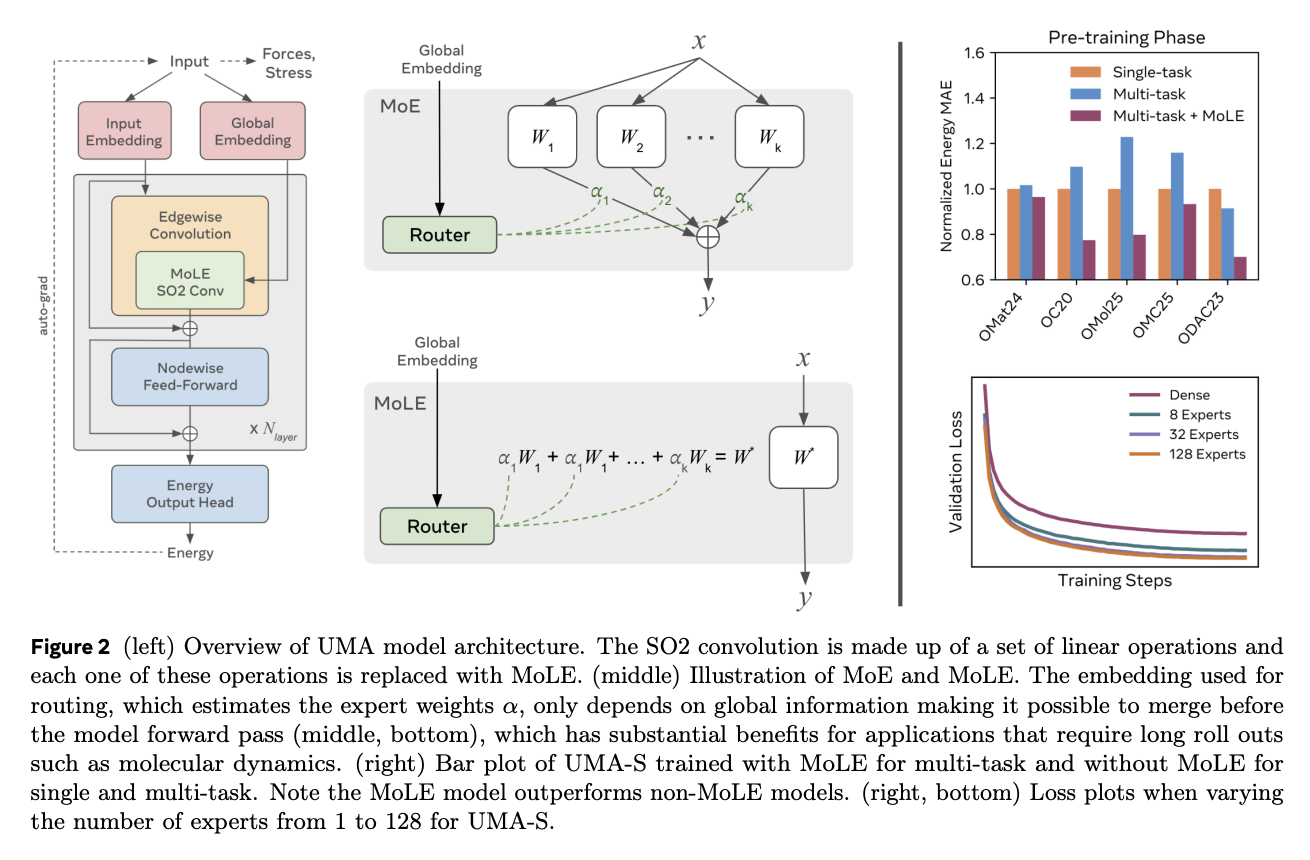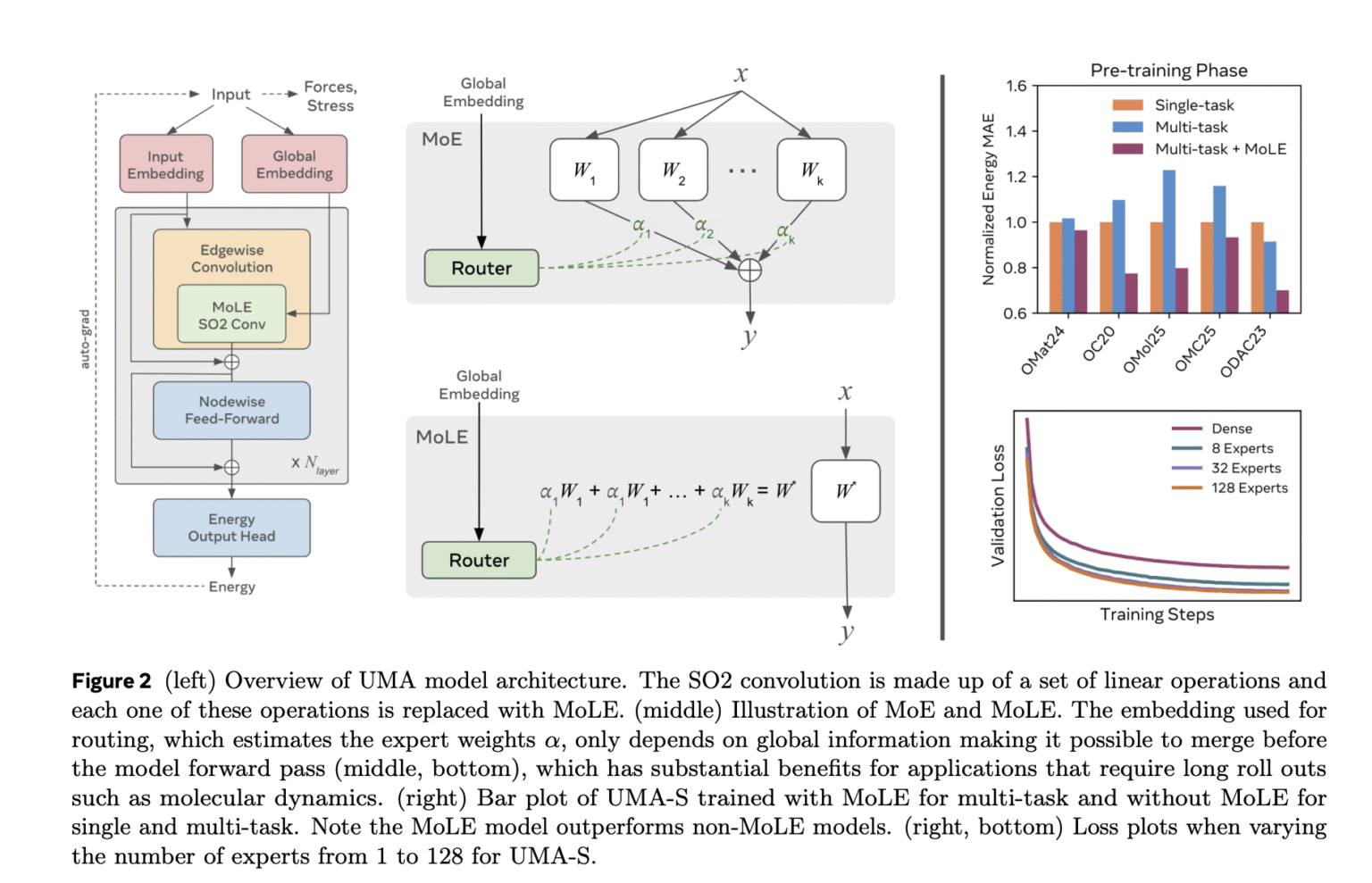Density Functional Theory (DFT) serves as the foundation of modern computational chemistry and materials science. However, its high computational cost severely limits its usage. Machine Learning Interatomic Potentials (MLIPs) have the potential to closely approximate DFT accuracy while significantly improving performance, reducing computation time from hours to less than a second with O(n) versus O(n³) scaling. However, training MLIPs that generalize across different chemical tasks remains an open challenge, as traditional methods rely on smaller problem-specific datasets instead of using the scaling advantages that have driven significant advances in language and vision models.
Existing attempts to address these challenges have focused on developing Universal MLIPs trained on larger datasets, with datasets like Alexandria and OMat24 leading to improved performance on the Matbench-Discovery leaderboard. Moreover, researchers have explored scaling relations to understand relationships between compute, data, and model size, taking inspiration from empirical scaling laws in LLMs that motivated training on more tokens with larger models for predictable performance improvements. These scaling relations help in determining optimal resource allocation between the dataset and model size. However, their application to MLIPs remains limited compared to the transformative impact seen in language modeling.
Researchers from FAIR at Meta and Carnegie Mellon University have proposed a family of Universal Models for Atoms (UMA) designed to test the limits of accuracy, speed, and generalization for a single model across chemistry and materials science. To address these challenges, Moreover, they developed empirical scaling laws relating compute, data, and model size to determine optimal model sizing and training strategies. This helped in overcoming the challenge of balancing accuracy and efficiency, which was due to the unprecedented dataset of ~500 million atomic systems. Moreover, UMA performs similarly or better than specialized models in both accuracy and inference speed on a wide range of material, molecular, and catalysis benchmarks, without fine-tuning to specific tasks.

The UMA architecture builds upon eSEN, an equivariant graph neural network, with crucial modifications to enable efficient scaling and handle additional inputs, including total charge, spin, and DFT settings for emulation. It also incorporates a new embedding that allows UMA models to integrate charge, spin, and DFT-related tasks. Each of these inputs generates an embedding of the same dimension as the spherical channels used. The training follows a two-stage approach: first stage directly predicts forces for faster training, and the second stage removes the force head and fine-tunes the model to predict conserving forces and stresses using auto-grad, ensuring energy conservation and smooth potential energy landscapes.
The results show that UMA models exhibit log-linear scaling behavior across the tested FLOP ranges. This indicates that greater model capacity is required to fit the UMA dataset, with these scaling relationships used to select accurate model sizes and show MoLE’s advantages over dense architectures. In multi-task training, a significant improvement is observed in loss when moving from 1 expert to 8 experts, smaller gains with 32 experts, and negligible improvements at 128 experts. Moreover, UMA models demonstrate exceptional inference efficiency despite having large parameter counts, with UMA-S capable of simulating 1000 atoms at 16 steps per second and fitting system sizes up to 100,000 atoms in memory on a single 80GB GPU.
In conclusion, researchers introduced a family of Universal Models for Atoms (UMA) that shows strong performance across a wide range of benchmarks, including materials, molecules, catalysts, molecular crystals, and metal-organic frameworks. It achieves new state-of-the-art results on established benchmarks such as AdsorbML and Matbench Discovery. However, it fails to handle long-range interactions due to the standard 6Å cutoff distance. Moreover, it uses separate embeddings for discrete charge or spin values, which limits generalization to unseen charges or spins. Future research aims to advance toward universal MLIPs and unlock new possibilities in atomic simulations, while highlighting the need for more challenging benchmarks to drive future progress.
Sajjad Ansari is a final year undergraduate from IIT Kharagpur. As a Tech enthusiast, he delves into the practical applications of AI with a focus on understanding the impact of AI technologies and their real-world implications. He aims to articulate complex AI concepts in a clear and accessible manner.




